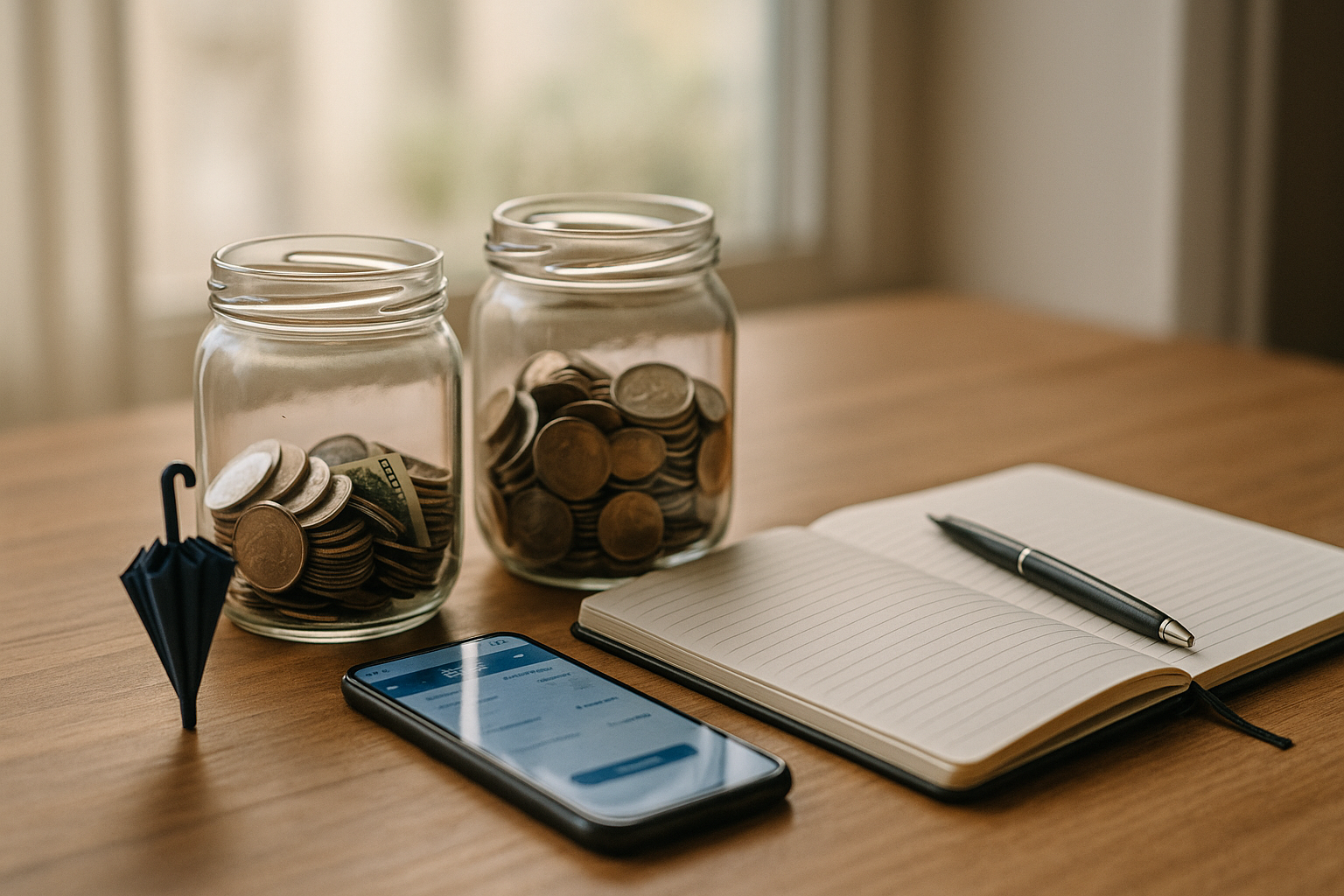Quick win: Keep a small checking buffer in your everyday account to prevent overdrafts, and a larger emergency fund in a separate high-yield savings for real crises. Different jobs, different homes, different rules.
Definitions in Plain English
- Cash buffer (a.k.a. checking buffer): A small cushion you leave in checking—typically $100–$1,000—to absorb timing hiccups (autopay posted early, grocery total higher than expected). It smooths cashflow; it’s not for emergencies.
- Emergency fund: A dedicated pile of cash—kept outside checking—for true “must-fix-now” events (car repair, urgent medical, essential home repair, job loss). Often nicknamed a rainy day fund at the starter level.
Why You Need Both
Think of the buffer as your “everyday shock absorbers,” while the emergency fund is your “airbags.” The buffer prevents small bumps from derailing the week; the emergency fund protects the entire plan when life throws a curveball.
Amounts & Timeline
- Cash buffer target: Start with $100–$300. Grow to the average size of your biggest weekly outflow (often $300–$600). The goal is no overdrafts, no anxiety.
- Emergency fund targets:
- Starter: $500–$1,000 (rainy day fund for small surprises).
- Core: 1–3 months of essentials (rent, utilities, groceries, transport, insurance, minimum debt).
- Full: 3–6 months if your income is variable or you have dependents.
Where the Money Lives (Placement Matters)
- Cash buffer: Your main checking account—labeled mentally as “do not dip below.” This keeps card swipes and autopay safe.
- Emergency fund: A separate high-yield savings account (HYSA). No debit card, transfer access only. Nickname it “Emergency Only.” Separation reduces temptation and earns interest.
Simple Setup in 20 Minutes
- Open/confirm accounts: One checking for spending (with your buffer), one HYSA for emergencies.
- Automate two moves the day after payday:
- Auto-transfer $10–$50 to your cash buffer until it reaches target, then pause.
- Auto-transfer $25–$150 to your emergency fund until you hit your current goal.
- Add a weekly 10-minute review: Check balances (Bills / Spend / Emergency). If the buffer dropped below target, top it up first; extra dollars go to the emergency fund.
When to Use Which (Yes/No Rules)
- Use the cash buffer for: An autopay that hits early, small rounding errors, a slightly over-budget grocery run, timing gaps between paychecks and due dates.
- Use the emergency fund for: Essential car or home repairs, urgent medical/dental, necessary travel for a family emergency, temporary loss of income.
- Don’t use either for: Sales, holidays, vacations, planned expenses (these belong in your normal budget or sinking funds).
Example: How They Work Together
Scenario: You maintain a $300 checking buffer and a $1,200 starter emergency fund in HYSA. A $40 utility autopay posts early—your buffer quietly absorbs it. Two weeks later, your car needs a $380 repair. That’s a true emergency—transfer from HYSA, pay the bill, then rebuild the emergency fund with your automations.
Common Mistakes (and Easy Fixes)
- Keeping everything in checking: The line blurs and you overspend. Fix: Move the emergency fund to a separate HYSA with no debit card.
- Huge buffer, tiny emergency fund: Cash sits idle in checking while you’re exposed to big risks. Fix: Cap the buffer; send surplus to HYSA.
- Using the emergency fund for non-emergencies: It never grows. Fix: Write “Yes/No” rules and add a 1–2 day pause before withdrawals.
- Not rebuilding after a hit: One emergency empties the safety net. Fix: Temporarily pause extras and re-automate until the target is restored.
FAQ
Is a rainy day fund the same as an emergency fund?
People use the terms interchangeably. Practically, “rainy day fund” often means the starter level ($500–$1,000) for small surprises, while “emergency fund” grows larger for big disruptions.
How big should my checking buffer be?
Enough to prevent overdrafts and stress—commonly $300–$600. If your weekly spending swings are larger, raise it to match your biggest typical week.
Where should I keep the emergency fund?
In a separate HYSA at a reputable bank or credit union for easy access and less temptation. Avoid investing it—market swings can hurt you right when you need the cash.

